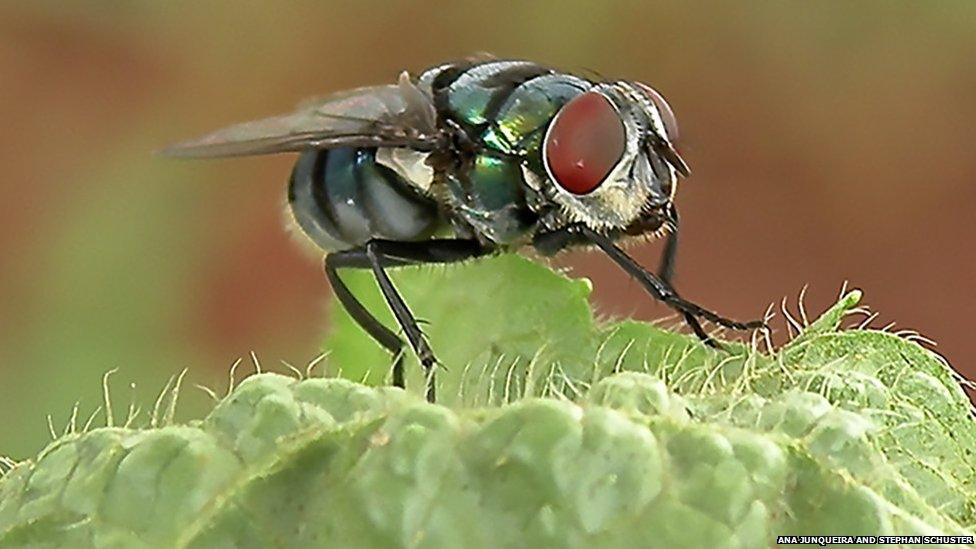Flies more germ-laden than suspected
- Published

Bristles on a fly's body attract bacteria
Scientists have discovered that flies carry more diseases than suspected.
The house fly and the blowfly together harbour more than 600 different bacteria, according to a DNA analysis.
Many are linked with human infections, including stomach bugs, blood poisoning and pneumonia.
Flies can spread bacteria from place-to-place on their legs, feet and wings, experiments show. In fact, every step taken by a fly can transfer live bacteria, researchers said.
''People had some notion that there were pathogens that were carried by flies but had no idea of the extent to which this is true and the extent to which they are transferred," Prof Donald Bryant of Penn State University, a co-researcher on the study, told BBC News.
Outbreaks
DNA sequencing techniques were used to study the collection of microbes found in and on the bodies of the house fly (Musca domestica) and the blowfly (Chrysomya megacephala).
The house fly, which is ubiquitous around the world, was found to harbour 351 types of bacteria. The blowfly, which is found in warmer climates, carried 316. A large number of these bacteria were carried by both types of fly.
The researchers, who published their study in the journal Scientific Reports, say flies may have been overlooked by public health officials as a source of disease outbreaks.
"We believe that this may show a mechanism for pathogen transmission that has been overlooked by public health officials, and flies may contribute to the rapid transmission of pathogens in outbreak situations," said Prof Bryant.
"It will really make you think twice about eating that potato salad that's been sitting out at your next picnic," he added.

Head of a blowfly under the electron microscope
However, the researchers believe flies could have their uses - acting as early warning systems for disease or even living drones sent into tight spaces to search for microbes.
"In fact, the flies could be intentionally released as autonomous bionic drones into even the smallest spaces and crevices and, upon being recaptured, inform about any biotic material they have encountered," said Stephan Schuster, research director at Nanyang Technological University, Singapore.
House flies are well known for their poor hygiene habits - visiting rubbish tips and feeding on all sorts of decaying food, animal corpses and faecal matter. They are suspected of carrying a range of human, animal and plant diseases.
Blow flies are one of the most common flies found around dead animals. They are common in urban areas and are often found near meat-processing plants, rubbish dumps and slaughterhouses.
Follow Helen on Twitter, external.